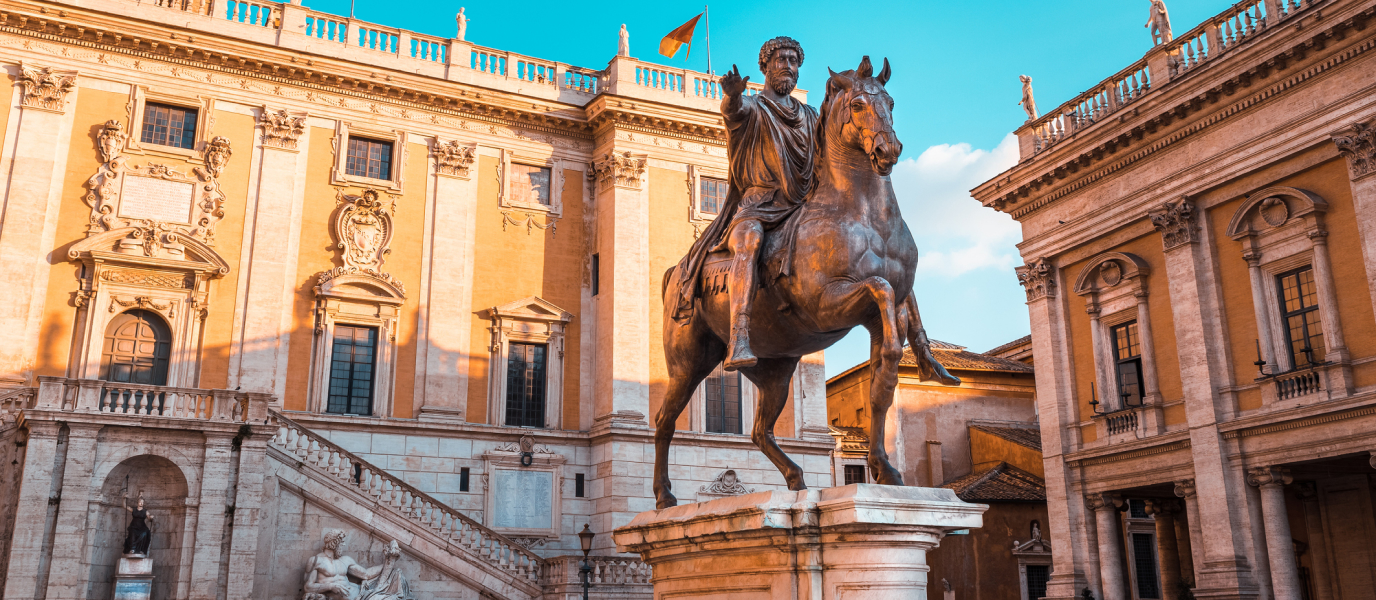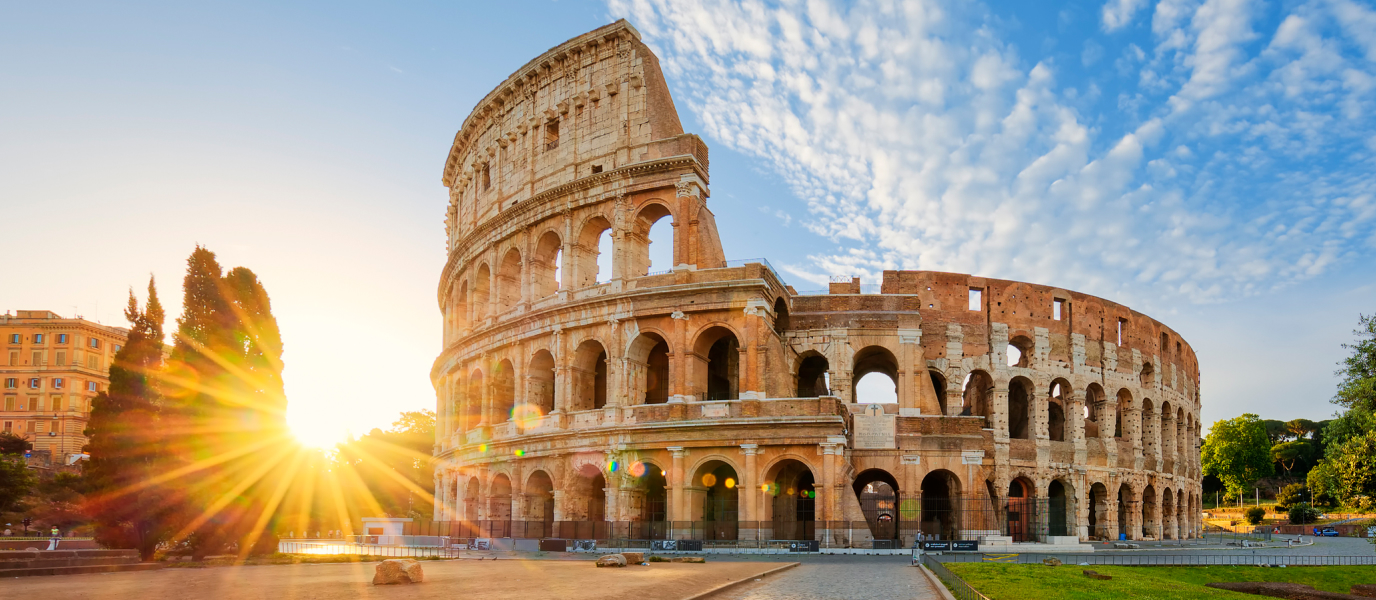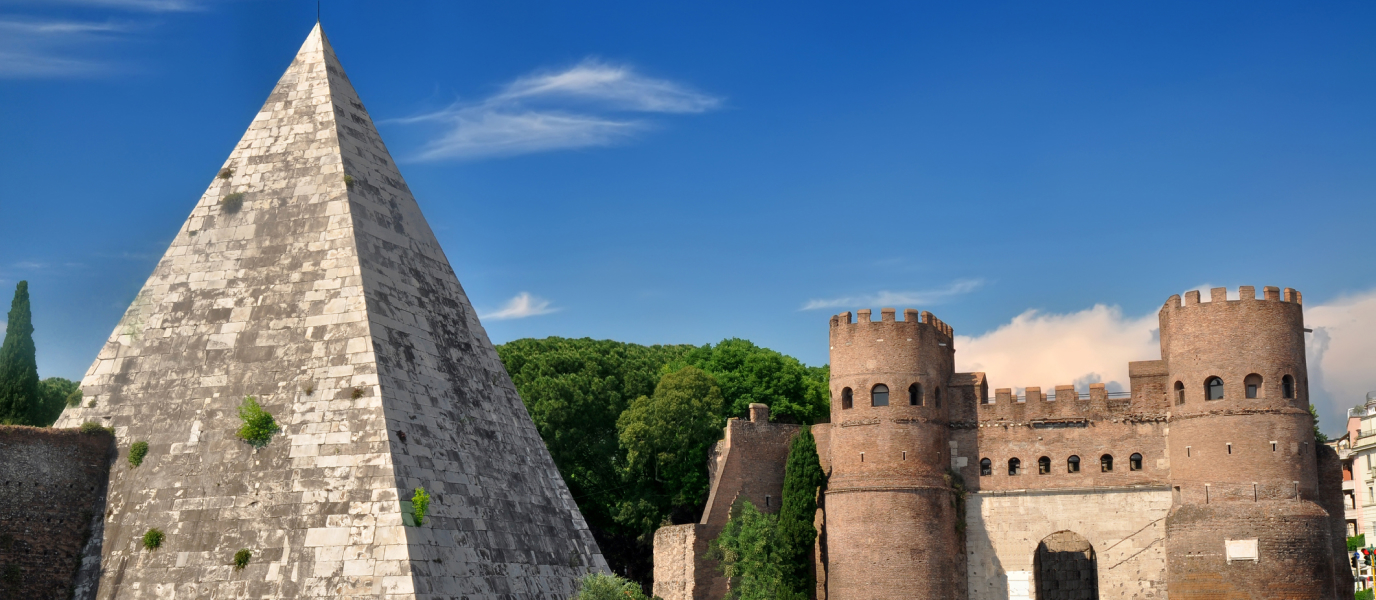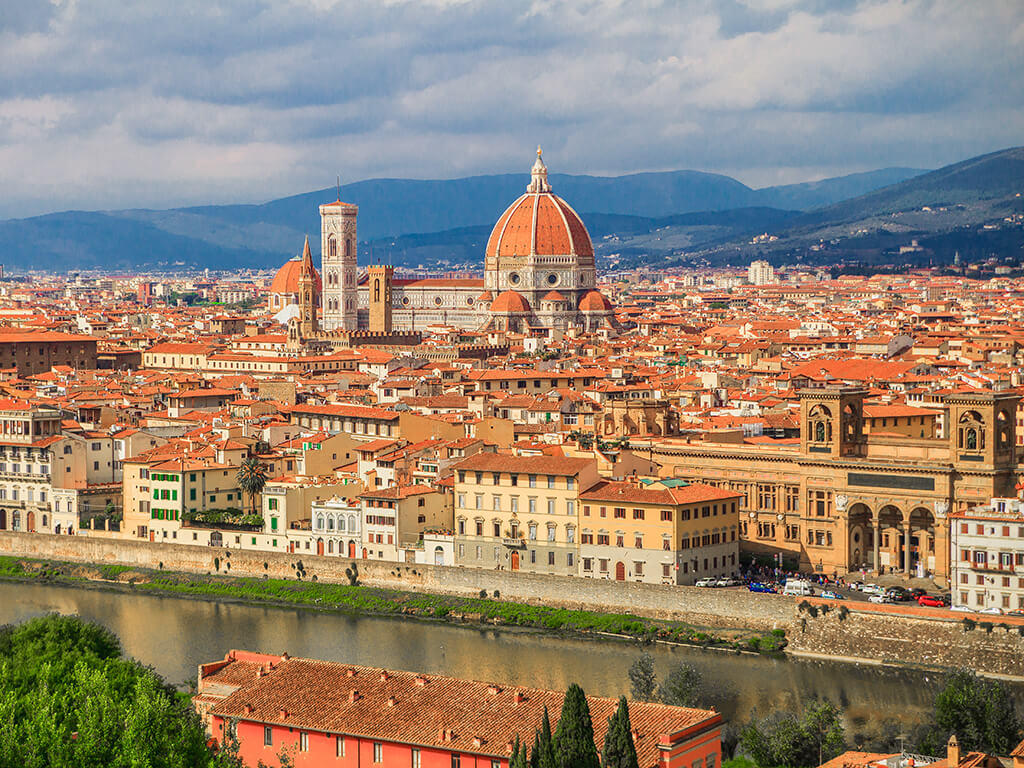Piazza del Campidoglio on Capitoline Hill is Rome’s ground zero and the last remaining Renaissance square in the city. All roads in Ancient Rome converged here, and it’s where the Romans celebrated their battle victories. The hilltop temple built in praise of Jupiter, the father of the Roman gods, was the most important church of the time, and communities from the surrounding area would go there to worship and make sacrifices. The rise of Christianity put paid to paganism, and the temple eventually fell into ruin.
History of Piazza del Campidoglio
Capitoline Hill and the Palazzo Senatorio (now the Town Hall) became the headquarters of the municipal government in the Middle Ages. Pope Paul III was so ashamed of the sorry state of Capitoline Hill (no wonder: it was used as pasture for goats) that in 1536 he commissioned a reform of the piazza in a bid to impress Charles V during his impending visit. The artist in charge? None other than Michelangelo.
The new piazza was a complete transformation and became the focal point of the city. The new design shifted the piazza through 180 degrees so that it faced St Peter’s Basilica (then the political heart of the city) and had the Roman Forum behind it.
A new entrance and double staircase was added to the Palazzo Senatorio so that it aligned with the Palazzo Nuovo and the Palazzo dei Conservatori. The Medieval features of the latter were removed so that the facades were all in harmony. Michelangelo designed a beautiful access staircase to the piazza with Renaissance banisters. Named the Cordonata, it connects the Campidoglio with Piazza d’Aracoeli at the base of the hill. A statue of Marcus Aurelius on horseback stands defiant in the Piazza del Campidoglio like a guardian (the original is in the Palazzo dei Conservatori).
Works at the piazza were competed a century after Michelangelo’s death though the paving (in accordance with the late artist’s design) was not laid until 1940. The only part of Michelangelo’s masterpiece that he saw completed before his death was the double staircase that formed part of the new entrance to the Palazzo Senatorio.
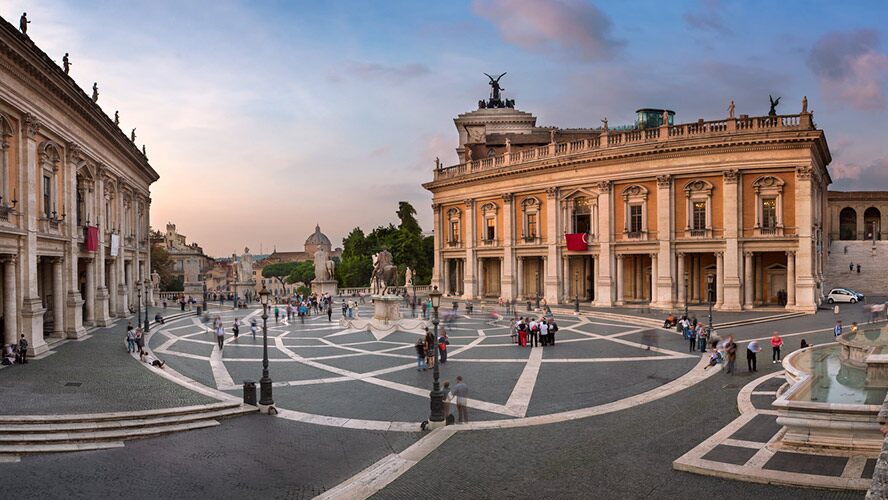
What to see in Piazza del Campidoglio
The piazza on Capitoline Hill boasts fine examples of beautiful Roman architecture and is steeped in its own legends:
- Palazzo dei Conservatori and the Palazzo Nuovo: These two palaces face one another in the piazza and together constitute the main headquarters of the world’s oldest public museum: the Musei Capitolini. The museum houses the famous bronze statue of the Capitoline Wolf suckling Romulus and Remus (the twins were allegedly added to the statue during the Italian Renaissance). You’ll also find the original statue of Marcus Aurelius, the foundations of the Temple of Jupiter and the beautiful piece titled The Dying Gaul.
- Tabularium: This network of buildings has two 80-metre facades, one facing the Forum and the other looking towards the piazza. It was once a public archive though is now in ruins aside from some of the original arches and the terrace.
- Palazzo Senatorio: This palace has served as the Town hall of Rome since the Middle Ages. It stands between the two buildings of the Capitoline Museums with some of its rooms facing the Roman Forum. The palace was built atop the ruins of the ancient Tabularium and once housed the official records office of the Roman Empire.
- Basilica di Santa Maria in Ara coeli al Campidoglio: The Basilica of St. Mary of the Altar of Heaven is believed to have been built over the ancient Temple of Juno. It was a Byzantine abbey before becoming a Christian church. With the ushering in of a republic at the hands of Cola di Rienzo, the basilica became Rome’s religious and civil heart. Cola di Rienzo added a spectacular 124-step staircase to the basilica to coincide with the spread of the Great Plague. It was used for criminal executions and di Rienzo himself was decapitated there after a popular uprising.
- Insula: The base of the church hides the remains of an Insula Romana, a type of apartment block that housed up to 380 people. The remains date back to the 2nd century AD and comprise four floors. The lower floor was for trade and a staircase from the mezzanine provided access to the upper floors, which had spacious accommodation.
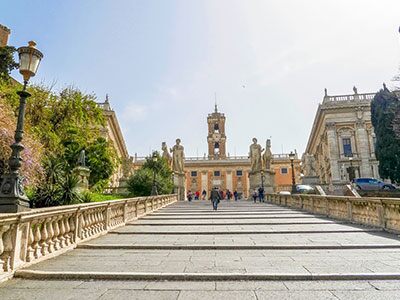
- Cordonata: Michelangelo’s famous staircase connects Piazza del Campidoglio with Piazza d’Aracoeli. It’s actually a sloping street designed with horseback riders in mind. Two lions rest at the bottom, and halfway up you’ll be greeted by a somewhat sombre statue of Cola di Rienzo marking the site of his execution. Several other sculptures await at the top.
- Views of the Roman Forum: For the best views of the Roman Forum, position yourself behind the Palazzo Senatorio, to the right of the Tabularium. At sunset, the spot is packed with tourists and photographers watching the last rays of sun over Rome’s ruins.
- Tarpeian Rock: According to legend, the maiden Tarpeia was flung from this cliff after letting in the enemy during an attack on the city. All traitors suffered the same fate after that.
Give yourself time to wander around and enjoy the views from Capitoline Hill, the real seat of Rome’s power.



























































